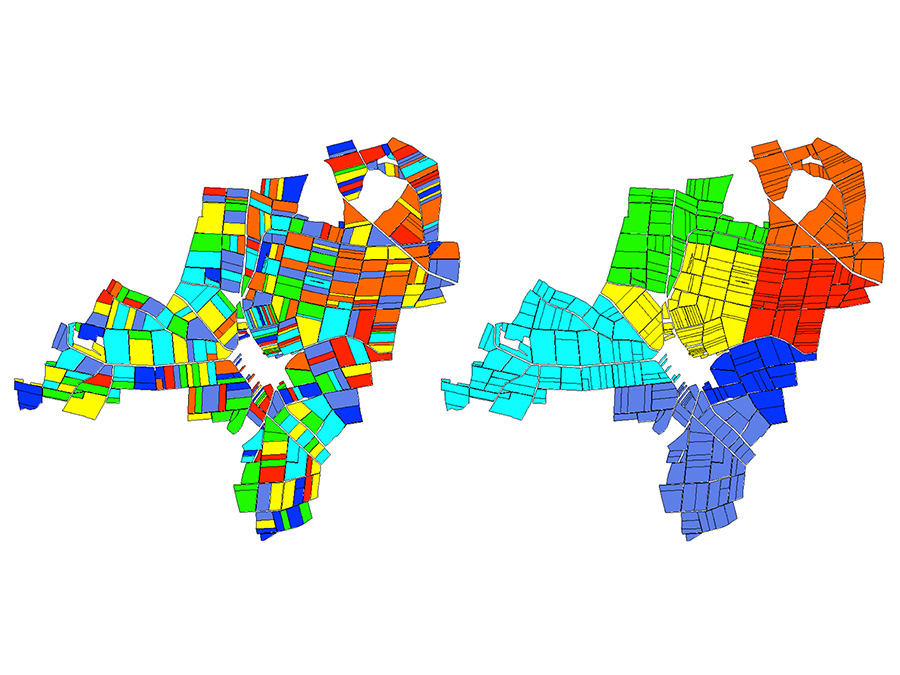Mathematicians develop algorithm for land consolidation
Successful field tests completed by TUM

Prof. Gritzmann and his team have developed a special software solution that makes the voluntary exchange of rights to use and lease agricultural land more efficient and effective than ever before. In the first step of this new process, each field is color-coded according to its respective owner. “The software then uses our algorithm to reallocate each farmer’s fields and effectively consolidate the agricultural land,” explains Gritzmann. With one mouse click, the software distributes the fields in question as effectively as possible, turning a chaotic patchwork of different colors into a structured, coordinated landscape in just a few seconds. The calculation factors in a number of different variables including soil quality levels, EU subventions and farmers’ wishes. “The great benefit of this new land consolidation process is that it saves farmers money, enabling them to work their lands more efficiently and reduce travel costs and CO2 emissions,” outlines Gritzmann.
Land consolidation, or Flurbereinigung as it is known in Germany, is not a new concept. The German King Ludwig II created the land reform law “Gesetz die Flurbereinigung betreffend” back in the 19th century. Unlike the traditional concept of land distribution, however, the modern-day initiative developed by the Bavarian Ministry of Food, Agriculture and Forestry only involves the exchange of cultivation rights. The actual ownership of the fields does not change. What at first sounds like a simple process is in fact extremely complex. “Even if you are working with just ten farmers who have a total of 300 fields between them, you are still looking at 10 to the power of 300 different possible allocation combinations,” says Gritzmann. By comparison, the number of atoms in the known universe is a comparatively humble ten to the power of 78. To effectively manage this huge number of options and keep computing time to a minimum, the new process uses sophisticated mathematical ideas drawn from algorithmic geometry and optimization. In simple terms, it isolates groups of fields so that each farmer’s fields are as close together as possible yet as far as possible from the other fields.
The new system also fosters a strong sociological component based on group dynamics. At the start of each consolidation process, the landholders only include fields of comparatively poor quality. This is an entirely understandable approach, but it also limits the potential for efficiency gains. To counter this, the mathematicians developed a “swap tool” that enables landholders to “play around” with the fields they submit for consolidation and see the economic impact of their decisions in real time. During field tests, this gave farmers the confidence to include more and more of their fields. As a result, they were able to reduce running costs by up to 30 percent.
The process is not restricted to the reorganization of fields, however. In previous projects, Dr. Borgwardt successfully used it to consolidate woodland areas.
Prof. Gritzmann received the Max Planck Research Award for his groundbreaking work on algorithmic convex geometry. At the end of July, the Garching-based professor and his team received a further accolade: the Euro Excellence in Practice Award presented by the Association of European Operational Research Societies.
Contaxt:
Prof. Dr. Peter Gritzmann
Chair for Applied Geometry and Discrete Mathemathics
Technische Universität München
E-Mail – Web – Tel.: +49 89 289 16858
Technical University of Munich
Corporate Communications Center
- Henner Euting
- presse@tum.de
- Teamwebsite